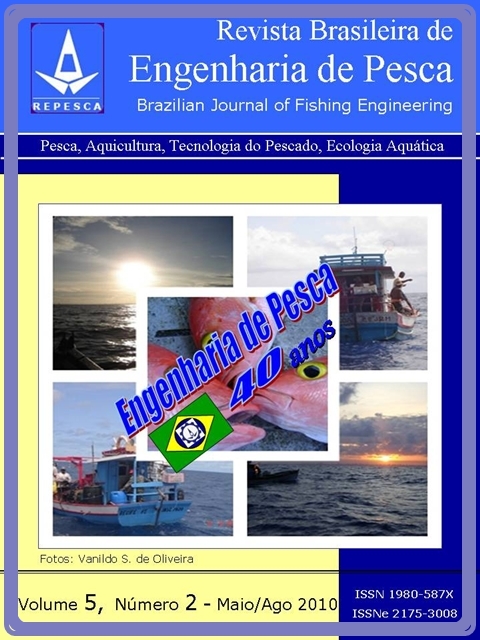FIRST RECORD ABOUT EFFICIENCY AND HUMIDITY OF COBIA SUBMMITED TO SALTING PROCESS
DOI:
https://doi.org/10.18817/repesca.v5i2.271Keywords:
Rachycentron canadum, process, fishesAbstract
With the cultivation of cobia Rachycentron canadum via off-shore system in Brazil, the development of salting methods that enable elaboration of top quality products, may be a manner to aggregate value to the fish. This research evaluated the efficiency and humidity for the R. canadum, when it was submitted to different procedures and salinity concentrations during the mixed salting process at two forms of presentation: split in half and sliced-refrigerated. The major efficiency was 49.79% for the sliced fishes with 10% of salinity, while on the treatment of the split in half fish at 40% of salt, the efficiency was 45.95%. The split in half fish, treated with 20% of salinity, suffered deteriorative process. The fishes presented initial humidity of 70.53%, being reduced to 34.74% on the sliced form with 40% of salt, and 66.41% and 64.67% on the split in half form at 10% and 15% of salt, respectively. This research verified that the mixed salting process of cobia is efficient for the sliced products, such as for those ones split in half on a traditional manner, with 40% of salinity, being an alternative to entrepreneurs and communities.Downloads
Published
2010-09-08
How to Cite
Santana, F. M. da S., Lins, L. H. C., Carvalho-Neto, P. M. de, Santana, C. A. da S., Silva, B. C. da L., Santana, N. de M., … Melo, K. S. G. de. (2010). FIRST RECORD ABOUT EFFICIENCY AND HUMIDITY OF COBIA SUBMMITED TO SALTING PROCESS. Revista Brasileira De Engenharia De Pesca, 5(2), 37–42. https://doi.org/10.18817/repesca.v5i2.271
Issue
Section
Artigos









